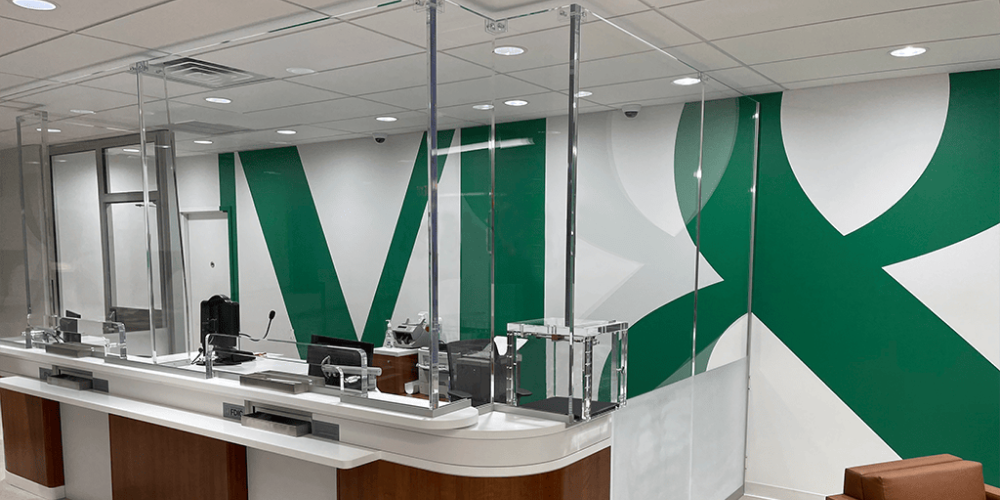The good news: Bank robberies peaked way back in 1991, and have since dropped by roughly 35 percent. The bad news: Even though robberies dropped throughout the ‘90s and the first decade of the 21st Century, they’ve since stubbornly plateaued at just over 6,000 robberies per year. Despite sinking rates of violent and property crime throughout the United States, ballistic bank teller windows continue to be an important security measure for retail banks.
BANK TELLER WINDOWS PROTECT STAFF
People think of bank teller windows as separating thieves from loot, but they’re really designed to separate violent criminals from the staff. According to Jim Richards, vice president of one of the nation’s top bullet proof manufacturers, “The vast majority of what we do is protecting people. When you talk to a bank manager, he never mentions the money in the drawers. Employees are his most valuable asset.”
This is, in fact, the official position of the American Bankers Association: “During a robbery, an institution’s number one priority is to protect customers and employees.” And a good thing, too; according to 2011 statistics from the FBI, 97 percent of all bank robberies involved “counter personnel” (aka “bank tellers”).
BANK TELLER WINDOWS DETER ROBBERIES
Bank heists have a very different profile from most armed robberies. Where as most bandits choose to work under cover of darkness–making the 9pm to 3am shift the most dangerous time to work at gas stations and 24-7 convenience stores–bank robbers have to make their move during the day. Over half of these robberies are committed before 1pm, and there is a slight preference for Friday robberies–periods when most criminals believe banks are more likely to have more cash on hand.
Unfortunately, these are also the days and hours that many banks are busiest; a lunchtime robbery on Friday has a high likelihood of involving many innocent bystanders, as well as the full regiment of bank personnel.
But according to FBI statistics, bank teller windows are a powerful deterrent to armed bandits. Of the 5,014 banks robbed in 2011, almost every single facility had functioning alarm systems and security cameras in place–demonstrating that these are pretty poor determents. Only 15 percent of the victimized institutions had bullet resistant bank teller windows. Armed robbers take one look at all of that gleaming ballistic acrylic, and decide to move on to an easier target.


